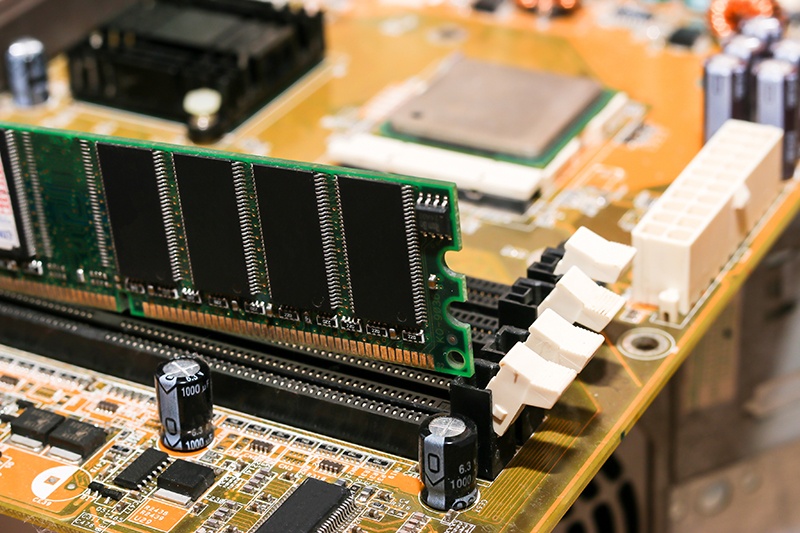01 Apr 2025
Under the Patent Cooperation Treaty (PCT), you can file a single “international” patent application that’s effective as an initial patent application with all PCT member countries. This allows you to secure a filing date while deferring the decision about where you want to pursue patent protection.
If you decide to enter the United States based on a PCT application, you’ll choose between the following two options:
- File a traditional national stage of the PCT application under 35 U.S.C 371.
- File a new U.S. application under 35 U.S.C. 111(a) claiming priority (under 35 U.S.C. 120) to the PCT application. This is known as a bypass continuation.
At Henry Patent Law Firm, our attorneys frequently assist clients with filing both types of applications. So which option is better for your needs?
National Stage Applications Versus Bypass Continuations
Both bypass continuations and traditional national stage applications may lead to similar outcomes, but the option you choose will depend on which process better fits your needs.
The table below outlines the basic procedural differences between the two:
| Traditional national stage (NS) | Bypass continuation (BC) | |
| Filing fees | May be eligible for reduced filing fees (if the USPTO designated as ISA or IPEA), as provided by 37 CFR 1.492 | Standard filing fees apply, as provided by 37 CFR 1.16 |
| Priority documents | No need to resubmit certified copies of foreign priority documents if transmitted to USPTO by International Bureau (IB) | Must file certified copies of priority documents (if non-U.S. priority) |
| Prioritized (“Track One”)/accelerated examination | Not permitted upon initial filing (“Track One” request can be filed later, with RCE) | Permitted upon initial filing |
| New matter | Not permitted | Permitted in a “continuation in part” (CIP) application. However, new matter is not entitled to earlier priority date of PCT application. |
| Examination of multiple inventions | Unity of invention | U.S. restriction practice |
| PCT documents | No need to refile documents (e.g., international application, article 19/34 amendments) transmitted from IB to USPTO | Must file all documents, even those transmitted from IB to USPTO |
| Request for Continued Examination (RCE) | Can only be filed if all inventor declarations have been filed | Can be filed even if inventor declarations have not been filed |
| Deferral of Filing Fees | Must file basic national stage fee by 30-month deadline | All fees can be paid after the 30-month deadline |
When to File a Bypass Continuation
From the table above, bypass continuation (“BC”) applications can involve a couple of extra steps (such as re-filing documents) as compared to national stage (“NS”) applications. However, there are a number of good reasons that you might prefer to file a BC application, which we have summarized below.
In addition to the reasons described below, it’s also worth noting that the USPTO tends to process BC applications much faster than NS applications. Although this is somewhat anecdotal, we’ve heard from other practitioners who have observed a similar trend, and for this reason, many applicants prefer to file BC applications rather than NS applications.
Here’s a more detailed look at circumstances where applicants might want to consider filing a bypass continuation instead of a traditional national stage application.

1. Introduce “New Matter” in Your U.S. Application
If you’ve further developed or modified the inventions described in your PCT application since you originally filed, you can use a BC to capture the material in the PCT application as well as the more recent developments.
You cannot add “new material” to an NS application because it’s treated as the same application as the PCT application. Though you may amend the application at the time of filing or at any time during prosecution, any amendments must still be supported by the original PCT application.
Conversely, BCs are treated as new applications. Generally, the rules governing the claims and specification of NS applications also apply to the BC, with one exception: When you file the BC, you CAN add new matter to the specification and claims, so long as the new matter is added at the time of filing.
- If you file the BC with amendments that add new matter, it’s called a “continuation-in-part.”
- If you don’t add new matter when you file the BC, it’s called a “continuation.”
If you file a continuation-in-part, keep in mind that any claims covering new matter will receive a priority date of when the U.S. application was filed — meaning that those claims will NOT enjoy the same priority date as the PCT application.
2. Obtain Prioritized (or Accelerated) Examination in the United States
You can fast track your initial U.S. filing by filing a Track One request for prioritized examination. If you’d like to pursue this option, consider filing a BC.
In a traditional NS application, Track One is available later in the filing process, upon filing a request for continued examination (RCE).
However, Track One requests require significant additional fees (currently $1,806 for small entity; $4,515 for large entity). So, this option is usually reserved for important applications.
3. Overcome Lack of Unity in Your PCT Application
Under the PCT, patent applications must meet the requirement for unity of invention, or else the applicant may need to pay additional search fees.
Here’s how the requirement for unity of invention is defined under patent law: “An international and a national stage application shall relate to one invention only or to a group of inventions so linked as to form a single general inventive concept… Where a group of inventions is claimed in an application, the requirement of unity of invention shall be fulfilled only when there is a technical relationship among those inventions involving one or more of the same or corresponding special technical features.”
An NS application would be examined for unity of invention under the same (WIPO) standards as the PCT application.
If the PCT examiner finds a lack of unity in your application, you could get a different result in the United States by filing a BC. This is because a BC would be examined under U.S. restriction rules instead.
According to U.S. restriction rules, “If two or more independent and distinct inventions are claimed in a single application, the examiner in an Office action will require the applicant in the reply to that action to elect an invention to which the claims will be restricted.”
However, U.S. examiners have quite a bit of discretion under U.S. restriction rules, and it’s difficult to predict the outcome for most cases. As such, the differences found in U.S. restriction rules are rarely considered a significant factor.
4. U.S. Declarations Have Not Been Executed
If you have not obtained executed declarations from all inventors at the time of filing the US application, you should consider filing a BC application instead of a NS application.
The reason is that you cannot file a request for continued examination (RCE) in an NS application until you have file executed declarations from all inventors. Therefore, if there’s an unexpected delay in obtaining even one inventor’s declaration, you will not be able to file an RCE in your NS application. Even though this is a rare circumstance, it can be very costly and can create a major roadblock in US prosecution.
By contrast, an RCE can be filed in a BC application regardless of whether inventor declarations have been filed. In fact, inventor declarations can be deferred all the way up until the time of paying the issue fee. There’s usually not a good reason to wait that long, but the added flexibility can come in handy.
5. You Want to Defer Filing Fees
If you want to defer payment of the USPTO filing fees for your US application, a BC application is the better option. This is because a BC application allows you to defer all filing fees, whereas the basic national filing fee cannot be deferred in an NS application.
So, for example, you can file a BC application on the 30-month deadline with no filing fees, and the USPTO will then send you a Notice to File Missing Parts, which has a 7-month response deadline (utilizing all extensions). By contrast, the basic national filing fee must be filed in an NS application by the 30-month deadline without exception.
Drawbacks of Filing a Bypass Continuation
If the circumstances above apply to you, you may want to file a BC — but keep in mind that the following two factors could affect your filing process.

1. An Earlier Filing Deadline
Technically, both BC and NS applications must be filed while the PCT application is pending — in other words, within 30 months of the PCT priority date.
However, if you’re adding “new matter” to a BC, you may want to file the application earlier in order to avoid prior art.
As discussed above, any claims covering the “new matter” will NOT have priority back to the PCT filing date or the PCT priority date. Consequently, if material from the PCT application becomes publicly available or publicly disclosed in the interim, it can be used as prior art against your claims to new matter.
Common examples of public disclosure include:
- Publication of the PCT application itself (PCT applications are published after 18 months)
- Publication by the inventors elsewhere (such as industry journals)
- Public presentations
- Public uses or demos of the technology
- Public sales
- Corporate publications (such as blog posts or marketing material)
If these disclosures occur more than one year before you file the BC, they can become prior art that can be used against the claims to new matter. But any such disclosures made less than one year before you file the BC will be considered “grace period” inventor disclosures — not prior art.
So if you are adding new matter, you should try to file the BC within a year of any material from the PCT application first becoming publicly available.
2. Resubmitting Copies of Priority Documents
With an NS application, you typically won’t need to file copies of your priority documents or other documents that were received by the International Bureau in the PCT application, as the International Bureau will send them directly to any designated offices that want to see them.
But with a BC, if there is foreign priority, you might need to obtain and resubmit certain documents, such as certified copies of the foreign applications. However, this usually doesn’t take much effort and therefore is typically not a significant factor in deciding whether to file BC versus NS. For example, the USPTO can typically obtain foreign priority applications in electronic format directly from the foreign patent office.
Ready to File Your Patent Application Via the PCT?
Henry Patent Law Firm’s attorneys and paralegals are experienced with both BC and NS applications, and we can help you determine which approach is best for your IP needs. Contact us now to get started!

Michael K. Henry, Ph.D.
Michael K. Henry, Ph.D., is a principal and the firm’s founding member. He specializes in creating comprehensive, growth-oriented IP strategies for early-stage tech companies.

